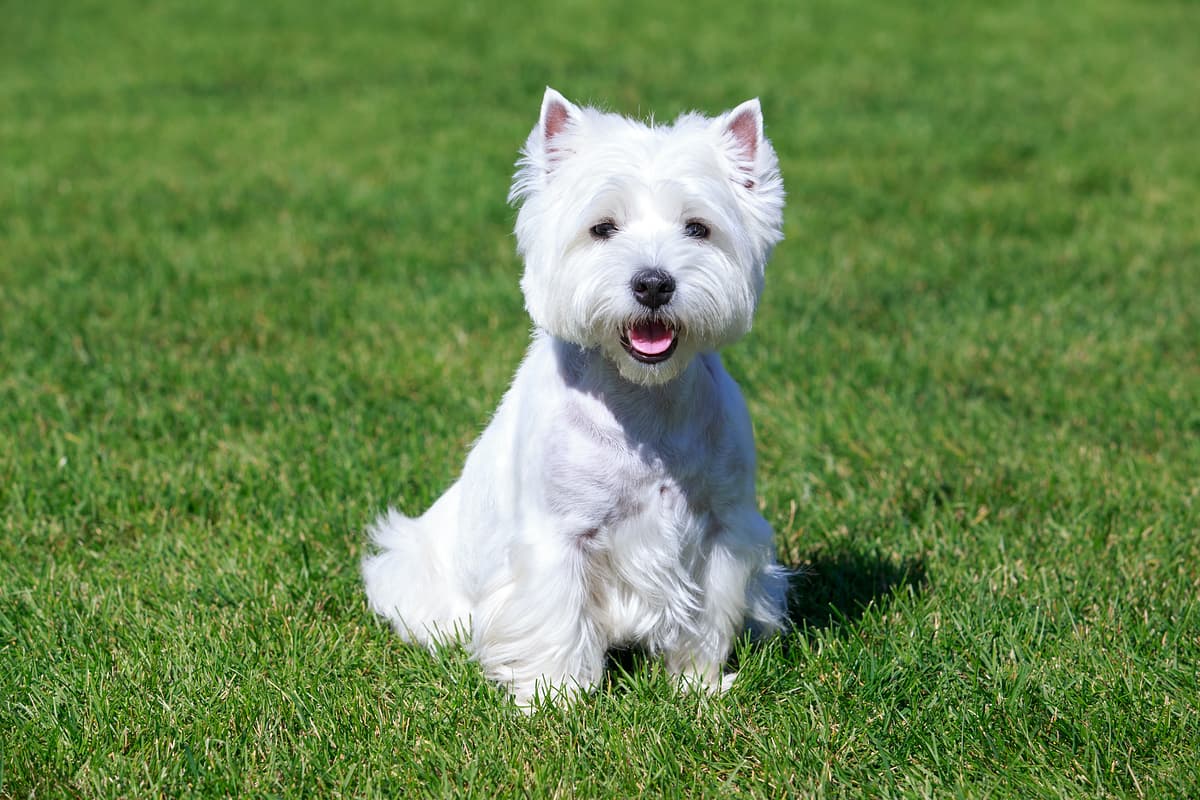West Highland White Terrier vs English Bulldog
Discover the differences between West Highland White Terrier and English Bulldog to make the best choice for your situation.
Try different breeds

West Highland White Terrier
Bold, lively, and affectionate, this small terrier thrives on companionship and adventure. Always alert and charming, it brings energy and cheer to any household.

English Bulldog
Stocky, courageous, and affectionate, this breed charms with its wrinkled face and calm nature. Loyal and gentle, it thrives as a loving family companion.
Quick comparison
Small
7–10 kg
Double coat, harsh outer layer
12–16 years
6–7 kg
Moderately active
Medium
23–25 kg
Short, smooth
8–10 years
18–23 kg
Low activity needs
Personality & behavior
Compare the personality traits and behavioral characteristics of both breeds.
West Highland White Terrier
Outgoing with people and other friendly dogs
Quick learner, responds well to training
High activity needs, enjoys regular exercise
Loves games and interactive play sessions
Adjusts well to various home environments
English Bulldog
Affectionate and gentle with family and children
Learns basic commands with some patience
Prefers lounging over vigorous physical activity
Enjoys play but tires fairly quickly
Adjusts well to most living environments
Care needs
Exercise, grooming, and daily care requirements
West Highland White Terrier
Skin allergies, patellar luxation
English Bulldog
Brachycephalic syndrome, skin fold infections
Suitability
How well each breed fits different living situations and families
West Highland White Terrier
Good option
Generally easy to train but needs consistent boundaries and supervision
Apartment friendly
Small size and moderate exercise needs suit compact living spaces well
Moderately suitable
Enjoys play and walks but doesn’t require constant high activity
Usually good
Playful and sturdy but should be supervised with very young children
Can be selective
May be territorial or chase smaller pets unless socialized early
Not ideal
Dislikes being left alone and can develop separation anxiety or destructive habits
English Bulldog
Good option
Easygoing, low-maintenance nature suits owners with limited dog experience
Excellent fit
Moderate exercise needs and calm demeanor work well in small living spaces
Not ideal
Low stamina and breathing issues make them unsuited for high-activity lifestyles
Very suitable
Gentle, patient, and tolerant with young children when properly socialized
Usually compatible
Generally sociable but may need guidance with other pets, especially dogs
Not recommended
They struggle with long periods alone and are prone to separation anxiety
Breed strengths
What each breed excels at and their best qualities
West Highland White Terrier
- Alert watchdog instincts and quick response
- Adaptable to various living environments
- Friendly with children and most families
- Low-shedding, easy-to-maintain double coat
- Energetic and enjoys daily exercise
English Bulldog
- Affectionate with family members
- Generally good with children
- Low exercise requirements
- Minimal grooming needs
- Adaptable to apartment living
Challenges & considerations
Potential challenges and considerations for each breed
West Highland White Terrier
- Prone to stubbornness during training sessions
- Can be territorial with other dogs
- Needs consistent mental and physical stimulation
- Tendency to dig due to hunting instincts
- May develop skin allergies or sensitivities
English Bulldog
- Prone to respiratory problems
- High risk of overheating
- Susceptible to skin infections
- Can be stubborn during training
- Tends to drool frequently
Ready to choose your perfect breed?
Learn more about each breed or compare other breeds to find the perfect match for your lifestyle.
Discover more helpful tools
Make use of our other free tools to get the most out of your pet experience
